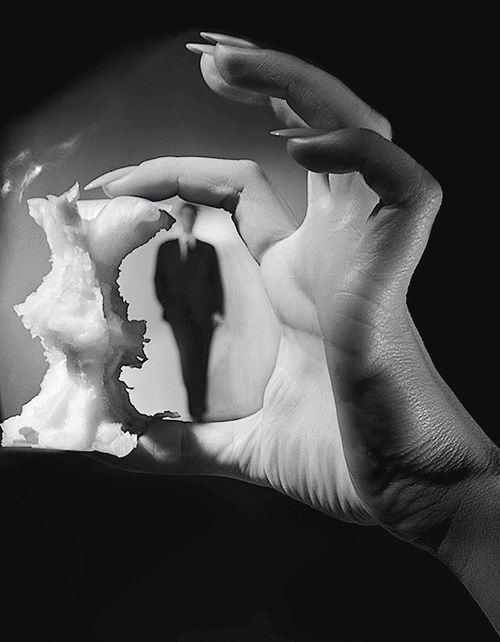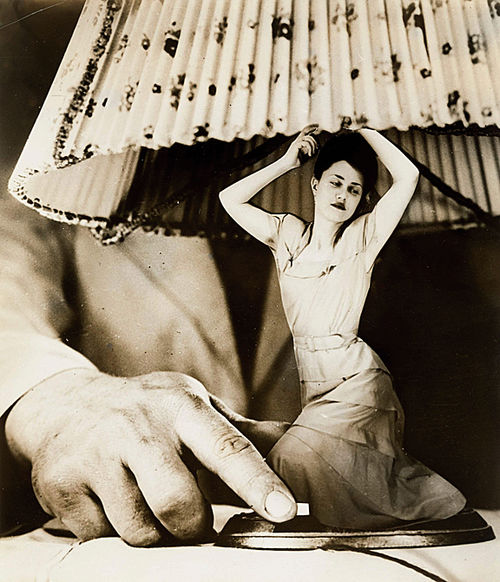Feminist Art and "Artivism" in Latin America
Mónica Mayer To write about feminist art in Latin America means to formulate a long list of questions about a long-standing activity and a new field of research that range from "What is feminist art and how and by whom has it been produced?" to "What social factors enabled artists in the mid-twentieth century, myself among them, to approach or reject feminist art in each region of Latin America?"
I began calling myself a feminist artist in the 1970s, and I continue to do so because in Mexico that term is still cause for discomfort. I worked in the feminist movement for a few years, but my battle has always been waged through art and in the art world. In that I was not alone. Artists like Maris Bustamante, Magali Lara, Pola Weiss, and Ana Victoria Jiménez also questioned women's inequality in art by making work about personal experiences and by organizing exhibitions that reflected the belief that it is important to challenge a patently patriarchal art system. That is why, for me, producing artwork has been as important as writing, teaching, disseminating, registering, and building archives. The 1970s also witnessed the emergence of vast production of what we now call "artivism," a combination of art and activism that has yet to be included in contemporary Mexican art history. I am thinking, for instance, of the work of La Revuelta, a collective that did street theater or cultural guerrilla warfare—what we would call performance today. Jiménez documented all that work through the 1980s, and then Rotmi Enciso took over.
María Laura Rosa I would go further back. Throughout history there have been women who have exercised their human and creative freedom, aware that this was neither expected nor commonplace for their gender.
In addition to those individual women who, at the end of the nineteenth and during the first half of the twentieth century, fought for our rights of citizenship as Latin American women or formed part of early feminist movements, there were artists who may not have called themselves feminists or formed part of those movements but who did create works that can now be interpreted in relation to feminist art theory. The photographers Annemarie Heinrich (fig. 1) and Grete Stern (fig. 2) in Argentina, for instance, have been analyzed in terms of that field of study.# The fact that an artist did not actively participate in those early women's movements does not imply that she was not aware of them; the possibility of combining feminist activism and artistic creation simply did not form part of the mental landscape of women creators until the second wave of feminism, that is, until the 1970s.#
Women creators like Frida Kahlo questioned what society expected of women. Kahlo was an active participant in political movements. Though from early on her work demonstrated that the private and the personal are political, she did not call herself a feminist. Her work has influenced feminist artists around the world and given rise to a number of interpretations informed by feminist theory. Art historians today, among them Griselda Pollock, argue that the feminist perspectives of many professionals in the art world have been shaped by the work of artists who questioned gender stereotypes and made alternative realities visible for women in their time.# Since the 1970s, however, there has been fluid exchange between feminist movements and artists. It is at that point that we start to speak of feminist artists and art, meaning creators who bring their feminism to bear on their work.
In Argentina the filmmaker María Luisa Bemberg and the photographer Alicia d'Amico (figs. 3a and 3b) were both members of the Unión Feminista Argentina (UFA). The photographer Ilse Fuskova was involved in the Movimiento de Liberación Femenina (MLF). All of them attempted to subvert patriarchy through their art, using their work as a means to raise consciousness of the oppression of women—an approach that tied them directly to feminist activism. Both subversion and consciousness-raising were, and continue to be, fundamental to feminist art and artists.
The 1960s also witnessed the emergence of artists who, though not activists themselves, created work that addressed gender issues, work that—it can be argued—gave shape to an art of gender.
Julia Antivilo Peña To call oneself an artist and take on the word feminist as a last name requires awareness of the relationship between feminist activism and artistic creation, and that awareness set in in the mid-1960s, gained ground in the 1980s, and is now increasingly powerful as bodies continue to take a political stance. I believe there are two distinct categories: "feminist aesthetic politics," which refers to artists or artivists engaged in any strain of feminism whose creations or actions entail the production of politically and socially committed art in which feminism is understood as a form of thought and action. The expression "gender aesthetics," in contrast, can be used by historians to refer to those who, out of ignorance or by choice, did not use the word feminist but whose work can be analyzed in terms of feminism insofar as it makes visible issues such as the injustice, violence, and economic vulnerability that many women are subjected to.#
Excerpted from Radical Women: Latin American Art, 1960–1985. Copyright © 2017 by the Armand Hammer Museum of Art and Cultural Center, Inc. Published by DelMonico Books, an imprint of Prestel. The full essay can be found in the exhibition catalogue, available here.
On Annemarie Heinrich, see Agustín Pérez Rubio, "Annemarie Heinrich: Liberación visionaria de los cuerpos," in Annemarie Heinrich: Intenciones secretas; Génesis de la liberación femenina en sus fotografías vintage (Buenos Aires: Museo de Arte Latinoamericano de Buenos Aires, 2015), 9–19. On Grete Stern, see Claudia Soria, "Grete Stern: Imágenes del goce femenino," Mora 16 (January–July 2010): 34–48; Paula Bertúa, La cámara en el umbral de lo sensible: Grete Stern y la revista "Idilio," 1948–1951 (Buenos Aires: Biblos, 2012); María Laura Rosa, "Entre el deseo y la represión: Grietas del ideal de domesticidad en la obra fotográfica de Grete Stern para la revista Idilio," Ensayos: Historia y teoría del arte, no. 22 (June 2012): 31–46; and Rosa, "Una mirada decisiva: Tensiones entre libertad y emancipación femenina en la serie Idilio de Grete Stern," Lectora: Revista de donas i textualitat, no. 20 (2014): 191–209.
As Stern's biographer Luis Príamo points out, "The series of photomontages published in Idilio . . . constitutes the first and most important work of Argentine photography to address the topic of women's oppression and manipulation in society at that time as well as the alienating consequences of submission with consent." See Príamo, "Notas sobre los Sueños de Grete Stern," in Sueños: Fotomontajes de Grete Stern; Serie completa; Edición de la obra impresa en la revista "Idilio" (1948–1951), ed. Luis Príamo (Buenos Aires: Fundación CEPPA, 2012), 15–28. Príamo stated, "The feminist spirit implicit in the way Grete led her life clearly had an influence on Silvia [Grete Stern's daughter, Silvia Coppola, a feminist gynecologist active in the struggle for legal abortion in Argentina]. No one spoke of feminism in the 1920s and 1930s, but Grete was indisputably a proto-feminist." Luis Príamo, personal communication with María Laura Rosa, January 17, 2011.
See Griselda Pollock, "Feminist Interventions in the Histories of Art," in Vision and Difference: Femininity, Feminism and Histories of Art (London: Routledge, 1988), 5–14. Pollock has articulated this idea in different texts that address the visual and textual work of contemporary artists such as Mary Kelly, Bracha Lichtenberg Ettinger, Lubaina Himid, Sutapa Biswas, and Sonia Boyce. See also Griselda Pollock, "Beholding Art History: Vision, Place and Power," in Vision and Textuality, ed. Stephen Melville and Bill Readings (Durham, NC: Duke University Press, 1995), 38–66.
Julia Antivilo Peña, "'Entre lo sagrado y lo profano se tejen rebeldías': Arte feminista latinoamericano; México, 1970–1980" (MA thesis, Universidad de Chile, 2006).







![Fig. 3a. Alicia d’Amico, 8 de marzo de 1984 (March 8, 1984), 1984 (Marta Miguelez [right])](/sites/default/files/styles/gallery_thumbnail/public/migrated-assets/media/Digital_archives/Radical_Women/Essays/03_pena-mayer-rosa_fig3a.jpg.jpeg?itok=6DSxV598)
![Fig. 3b. Alicia d’Amico, 8 de marzo de 1984 (March 8, 1984), 1984 (Susana Rinaldi [center], María Luisa Lerer and Mónica Tarducci [behind])](/sites/default/files/styles/gallery_thumbnail/public/migrated-assets/media/Digital_archives/Radical_Women/Essays/03_pena-mayer-rosa_fig3b.jpg.jpeg?itok=LqA3zNpR)
![Fig. 3a. Alicia d’Amico, 8 de marzo de 1984 (March 8, 1984), 1984 (Marta Miguelez [right])](/sites/default/files/styles/large/public/migrated-assets/media/Digital_archives/Radical_Women/Essays/03_pena-mayer-rosa_fig3a.jpg.jpeg?itok=9oFAJMIJ)
![Fig. 3b. Alicia d’Amico, 8 de marzo de 1984 (March 8, 1984), 1984 (Susana Rinaldi [center], María Luisa Lerer and Mónica Tarducci [behind])](/sites/default/files/styles/large/public/migrated-assets/media/Digital_archives/Radical_Women/Essays/03_pena-mayer-rosa_fig3b.jpg.jpeg?itok=hVy6ZgZy)